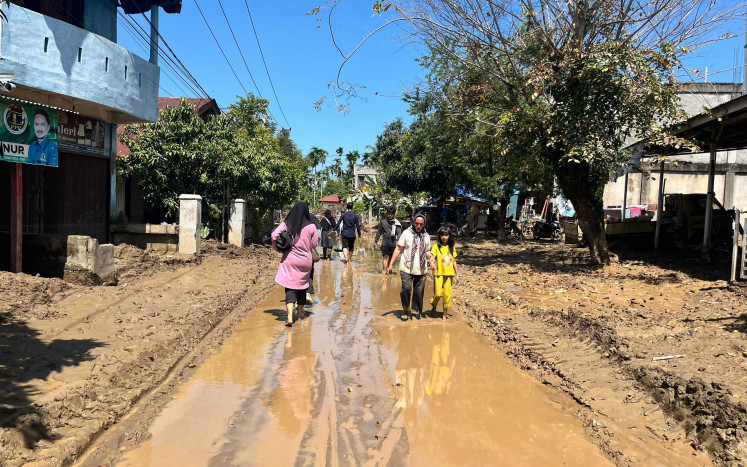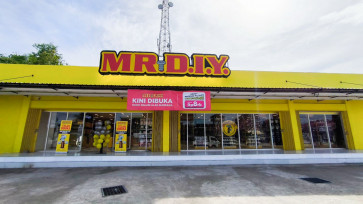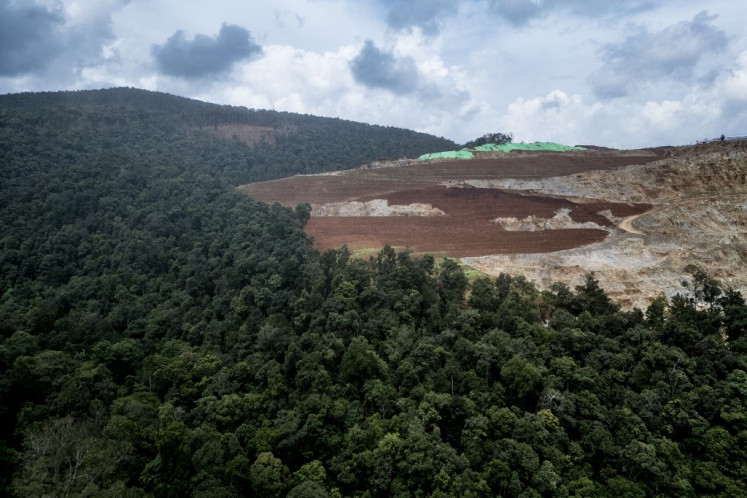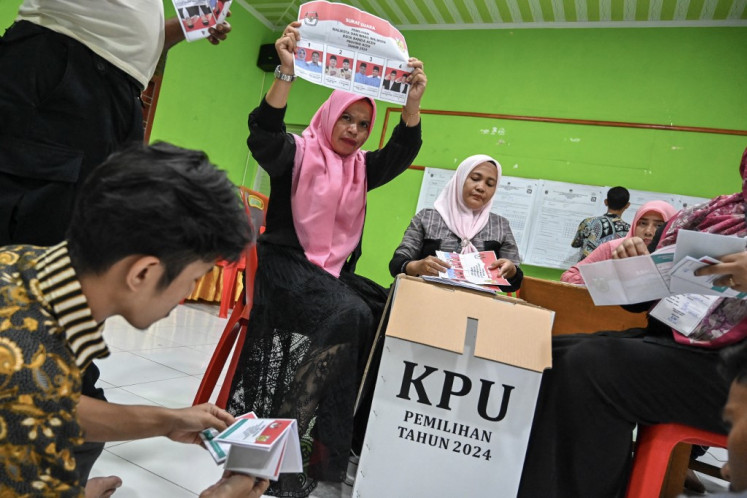Popular Reads
Top Results
Can't find what you're looking for?
View all search resultsPopular Reads
Top Results
Can't find what you're looking for?
View all search resultsMella Jaarsma: A guardian of arts
(JP/Bambang Muryanto)Having been living in Indonesia for 30 years, Dutch artist Mella Jaarsma has no intention of turning her back against the place she now calls her home
Change text size
Gift Premium Articles
to Anyone
(JP/Bambang Muryanto)
Having been living in Indonesia for 30 years, Dutch artist Mella Jaarsma has no intention of turning her back against the place she now calls her home.
The artist said she became interested in Indonesia through her fascination with shadows.
She saw that shadows had many meanings in different cultures, including in Javanese culture as represented in wayang (shadow puppet) performances.
With the sun shining over the tropical archipelago for almost the whole year, the 54-year-old, who settled in Yogyakarta in 1984, found that her shadows was stronger here than back in her country.
'For me, art should not just beautiful but should be meaningful,' said Jaarsma, who has successfully run the Cemeti Art House Gallery in Yogyakarta with her artist husband Nindityo Adipurnomo since 1988.
In Indonesia, where the influence off art history is not so strong, she felt freer in her creative endeavors as she was not compartmentalized like in Europe.
'Art history in Europe is very set in its ways,' said Jaarsma, whose works are on display at the Nadi Gallery in Jakarta until April 17.
The exhibited pieces are the works she created in the past five years while the exhibition's theme ' 'Potong Waktu' (Cutting the time) ' was taken from an installation that depicted a man holding a pair of huge scissors and dressed in cloth made of small ribbons.
Two different ribbons were used in the installation. One bears philosopher Swami Vivekananda's words: 'The senses cheat you day & night', while the other bears Spanish painter-printmaker Francisco Goya's: 'The Sleep of Reason Produces Monsters'.
Potong Waktu was also the title of another piece of art that also utilized scissors to create a vest made of chains.
'I have a special interest in history. I want to describe how people understand the abstract issue of time,' said Jaarsma, who was co-recipient of the 2006 John D. Rockefeller 3rd Award, New York, US, alongside her husband.
Through scissors, she wanted to interpret 'cutting' of history into separated events ' regardless of that fact that history is the record of interrelated events.
'People like to remember negative events and forget the positive ones,' said Jaarsma, who is an alumnus of Minerva Art Academy in Groningen, the Netherlands.
The exhibition's curator, Enin Supriyanto, disclosed in his curatorial note that since the 1998 reformasi, Jaarsma had produced artworks that symbolized tension between human being and their social environment.
'By presenting covers andclothes in various designs and materials, Mella shows people to be creatures with ever evolving identities,' he said.
Jaarsma said her art was a result of her contemplation of social events, which were enriched with thorough research
'To make sure my message is understood, I involve people and costumes to enable interaction between the art and the public,' she said.
Her colleague, artist Eko Prawoto, said Jaarsma's art contained deep philosophical meaning.
He said Jaarsma did not see Indonesia in a romantic light as she was a foreigner, which allowed her to dismantle social perception to find universal values.
'Mella's works contain deep meaning and even are reflective and almost spiritual,' Eko was once quoted in a catalog for one of Jaarsma's past exhibitions, entitled 'The Fitting Room'.
Together with her husband, Jaarsma has been running Cemeti, expanding it from being the living room in their house to the beautiful and spacious Javanese style gallery it is today.
Among the young artists having exhibited at the gallery are Heri Dono and Eddie Hara ' both renowned contemporary artists.
'There were galleries, but at that time, there was no space to exhibit the work of young artists,' Jaarsma says.
To this day, Jaarsma and her husband are continually on the look for talented artists, pushing them to exhibit their works and to document it.
They consider documentation important to the development of the country's fine art history records.
'That way, it will help them to learn to be much more confident,' she said.
Since its establishment, Cemeti Art House has organized some 10 exhibitions annually in Yogyakarta and other major cities in Indonesia as well as abroad.
Many consider the gallery to have played a great part in the development of the country's contemporary art scene, producing big names through its intervention.
'We also conduct residency programs and send artists to study abroad,' Jaarsma says.
Art observer Ade Tanesia noted that Cemeti had made breakthrough in its introduction of contemporary art using mixed-media.
Through the breakthroughs, Ade said the gallery had made a huge contribution to the shattering of the 'stagnant' fine art discourse, which dominated the 1980s.
Jaarsma said she only hoped to continue working in the country.
Despite retaining her Dutch citizenship, she considers herself to be more than close to Indonesia ' she has become one with the country.











